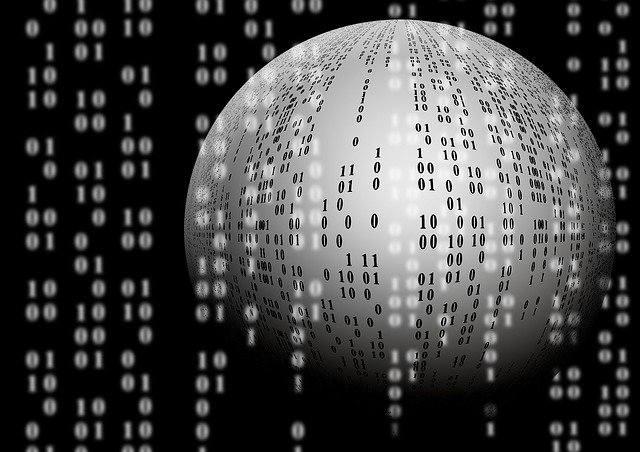In the world of mathematics, and more specifically in that of number systems, we find a multitude of possibilities. Before knowing what the binary numeral system is, we need to know exactly what a numeral system is. This can be defined as a finite set of symbols that are used to represent numbers. In the decimal numbering system we can see this much more clearly: we use only the numbers from 0 to 9 to represent them all, infinite. In addition to these two, there are many other systems, classified as non-positional and weighted., among which are, for example, hexadecimal, duodecimal or Roman. The most used today, as you may have already imagined, are decimal and binary. The decimal is the most widely used numbering system, as it is used for ordinary mathematics. In the case of the binary numbering system, it is used almost exclusively in the world of computing and electronics. Therefore, if you want to work as a computer scientist, you must have some knowledge, even basic, about this system.
What is the binary number system?
The binary number system, also called Binary Language or Binary Code, is a system that uses only two digits to represent all numbers. Not only in computing, but also in electronics, the numbering system par excellence. Each of these digits are called bits ( binary digit ), which most likely sounds like computer science to you. The bits are responsible for representing the rest of the numbers, so a number can be represented with one or more bits.
It was Pingala, an Indian mathematician from the 3rd century BC, who was the first to describe the binary numeral system. In ancient China and even in some traditional African divination systems, the use of this system can be observed as an alternative to the traditional system. It is in the seventeenth century when the binary system begins to become more echoed in literature. The father of the binary numbering system is considered Leibniz, a German philosopher, mathematician, logician, theologian, jurist, librarian and politician, who documented in his articles ” Explanation de l’Arithmétique Bonaire” the modern binary numbering system, that is, which is currently used. Later, well into the 19th century, the British mathematician George Boole created what is known as Boolean algebra ; a logic system that has been fundamental for the development of the current binary numbering system, especially in the field of electronics.
Today, the binary numbering system is a code that is joined to represent texts, data or to process instructions in any computing device, from a computer to a smartphone. This is because thanks to its ability to reduce everything to simple zeros and ones, it can program microprocessors, chips, it is used to encrypt information, etc. In short, it is the universal language of digital communication, electronics and other related areas.
How to go from decimal to binary and vice versa.
At this point, the only thing that remains for us to know to be clear about what the binary numbering system is is to know the process by which we can convert any decimal number into binary. For this, we will have to take into account the following points:
- The smallest binary number is 0, which is equal to 0 in decimal. The same goes for 1.
- Once we move on to the next number, since in binary only the numbers 0 and 1 are used, we must begin to make combinations of both. Therefore, two is equal to 10 (since 01 follows the rule of zero to the left ).
- The number three equals 11, and now we would start using three bits, since there are no more possible combinations of two bits between 0 and 1. In this way the number four corresponds to 100 in binary.
- Then follow 101, 110 and 111, until you reach those made up of four bits. The number eight corresponds to 1000 in binary code, which would be the first formed by four figures.
- The number nine is equivalent to 1001, and we would continue like this until we reached five, six, seven, etc., bits.
Each of the digits that represent numbers are called bits (binary digits).
From decimal to binary.
A priori, writing in binary code may seem somewhat tedious, but all you have to do is follow a series of guidelines that will help you go from decimal to binary using only pencil and paper.
- The first thing we will do is divide the number we want by 2.
- The binary will be equal to the figure resulting from writing down the last quotient and all the remainders from bottom to top.
- For example, if we divide 20 by two, the remainder is 0. We divide the resulting quotient, 10, by 2, whose remainder is also 0. Now, we divide this quotient, 5, by 2, and the result is a quotient of 2 and a remainder of 1. We divide the quotient again by 2 and the result is a quotient of 1 and a remainder of 0.
- By taking the results in ascending order from the last quotient and then all the remainders, we will obtain the number 10100 as a result. Therefore, we can already say that the number 20 in binary is equal to 10100.
From binary to decimal.
When doing the reverse process it is somewhat more complicated because it involves a few more steps to follow. But, after all, they are simple mathematical exercises that with a little practice we will be able to perform with more agility. To go from binary to decimal we will use the previous example:
- We number the bits from right to left, always starting with 0. In this way we would obtain a numbering that would be: 0=0; 0=1; 1=2; 0=3; 1=4.
- The following will be to multiply each bit by 2 raised to the number that we have assigned. Keep in mind that any number raised to 0 equals 1 and that any number multiplied by 0 equals 0.
- The next thing will be to add all the results, obtaining our decimal equivalent of the binary number that we had at the beginning.
In the following image we show you the two examples that we have explained to you so that you can see it more clearly.
Example of how to go from binary number system to decimal and vice versa.
Uses of the binary numbering system.
- Of course, the binary number system has many more uses than representing the decimal system. Since it is a system that allows any type of information to be reduced to just two figures, its use in computing is vital, since we can not only process information and images, but it is also used for programming video games, applications, videos, creation and programming of robots, etc. Of course, its use is not so easy and you have to have a great knowledge of this system to get to program with it. For simpler cases, binary converters into other codes or even ordinary language can be easily found on the Internet. So, you can know, if you are curious, how would your name be written in binary.
- In short, we can affirm that the basis of all the technology that surrounds us and the great advances that we are undergoing are due in large part to the binary numbering system.

